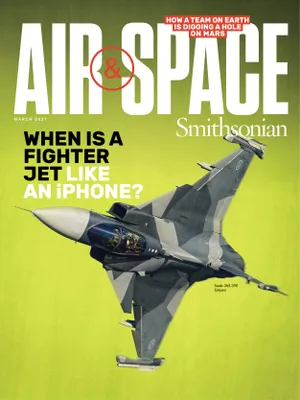More Than Just a Helicopter, the “Huey” Became a Symbol of the Vietnam War
The Bell UH-1H Iroquois was a single-engine workhorse.
:focal(978x809:979x810)/https://tf-cmsv2-smithsonianmag-media.s3.amazonaws.com/filer/5f/88/5f881d92-929f-422b-99b8-7668b403148c/27a_fm2021_belluh1hiroquoishueysmokeyiii_live.jpg)
The unmistakable sound of its main rotor blade was almost as distinct as its bulbous frame. Long before the Vietnam conflict had ended, the “Huey” (its original Army designation was HU-1A, for Helicopter, Utility, Model 1A) was probably the most recognizable helicopter in the world because of its appearances on nightly newscasts. More than 5,000 Hueys operated in Vietnam; around 2,500 were lost to enemy fire.
Initially conceived as a utility helicopter optimized for internal stretcher carriage, Huey variants became jacks of all trades thanks in large part to the reliability of its turbine engine, a revolutionary upgrade from the reciprocating piston design of earlier helicopters. Vietnam’s high humidity would necessitate continual improvements to the engine as the Huey became the taxi of the new “air mobility” school of warfare, with gunships escorting troop carriers into enemy territory and clearing landing zones with rockets and machine-gun fire before the less heavily-armed “slicks” inserted Marine or Army units and made a quick withdrawal. The final major variant, the UH-1H, arrived in 1967 with a 1,400-horsepower Lycoming T-53-L13 that allowed the design to carry 4,000 pounds of personnel or cargo as far as 285 miles without additional fuel tanks. Though its mission portfolio expanded steadily, the Huey retained its role as a medevac vehicle, transporting nearly two million wounded throughout the conflict.
